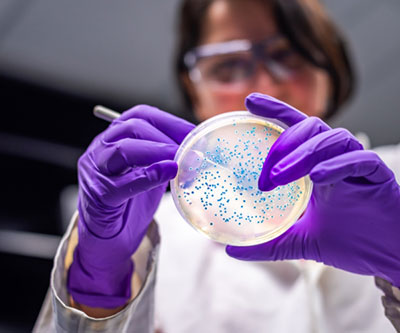
Bacteria, including E. coli, have regulatory elements that boost survival when key nutrients like nitrogen are in short supply. Bacteria can alter their metabolic pathways to create new sources of nutrients or utilize different nutrients, creating contingencies against nutrient-poor environments.
Small, regulatory RNAs (sRNAs), as their name implies, are RNAs that regulate gene expression in bacteria. Researchers from the Storz Lab recently identified a unique sRNA called GlnZ in E. coli. GlnZ comes from the three-prime untranslated region (3’ UTR) of the messenger RNA that encodes for glutamine synthetase, an important enzyme in nitrogen metabolism. sRNAs are typically found in the intergenic regions of RNA, but more of them, like GlnZ, are being discovered in the 3’ UTR.
Scientists have identified several sRNAs that regulate carbon metabolism, but very few are known to regulate nitrogen metabolism. In the study, the researchers found that GlnZ connects nitrogen and carbon metabolism, not just in E. coli, but likely in various classes of gut bacteria. The team found that under low nitrogen conditions, levels of GlnZ rise to modulate genes that affect carbon and nitrogen flux, enabling bacteria to grow despite the lack of environmental nitrogen. For example, GlnZ represses the activity of glnP and sucA RNAs, which respectively contribute to glutamine transport and the cell’s citric acid cycle. Overall, the findings not only contribute to the understanding of bacterial survival, but also provide a foundation for future studies on the role of sRNAs and their evolution in bacteria.
Learn more about the Cell and Structural Biology Group: https://www.nichd.nih.gov/about/org/dir/affinity-groups/CSB.
 BACK TO TOP
BACK TO TOP